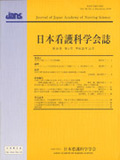Japanese
English
- 販売していません
- Abstract 文献概要
- 参考文献 Reference
- サイト内被引用 Cited by
要旨
看護職と市民(患者を含む)の関係は,パートナーシップといわれているが,実際にパートナーとしての在り方は難しい.これまで市民が自らの健康生活を主導することを目指して,市民向けの健康情報提供の場を看護大学内で運営し,また同様の目的で,最も基本的な健康情報である体の絵本を作成し,子どもに教える活動を行ってきた.この2つの活動を通して,市民と保健医療職とのパートナーシップを具体的にイメージできるモデルを見いだした.
パートナーシップには,パートナー同士の対等な立場と役割の明確化の2つが必要であり,これらを『垣根モデル』と『餅は餅屋モデル』によって説明した.『垣根モデル』は両者がそれぞれの領分を生け垣で区切り,常に低く刈り込む努力をすることにより,対等な関係を保てることを示したものである.『餅は餅屋モデル』は,関わる全ての人の特異な役割を互いに理解し,それぞれに任せることの重要性を説明したものである.
Abstract
It is said that people including patients and nurses relation is partnership, but for nurses, it is difficult to found partnership with people. The health information center is opened in a nursing college for people where people can get the useful information for their decision making to take initiative in their own healthcare. For the same purpose, “knowing the body project” developed the picture books of a body, and developed learning program of the body for children. Through these activities two models which explain and concretize the partnership with people and nurses were found.
Each partner has to have the equal power and own role to found the partnership. One model is named “Kakine-model (Hedge-model),” it shows the key point to make the equal power. All partners have own territory around trees and they have to make effort to keep the trees short.
Another model is “Mochi wa mochiya-model (Every man to his own trade-model).” This model presents all of partners have own special role, so it is important to clear the role and trust each other with the role.
Copyright © 2010, Japan Academy of Nursing Science. All rights reserved.


